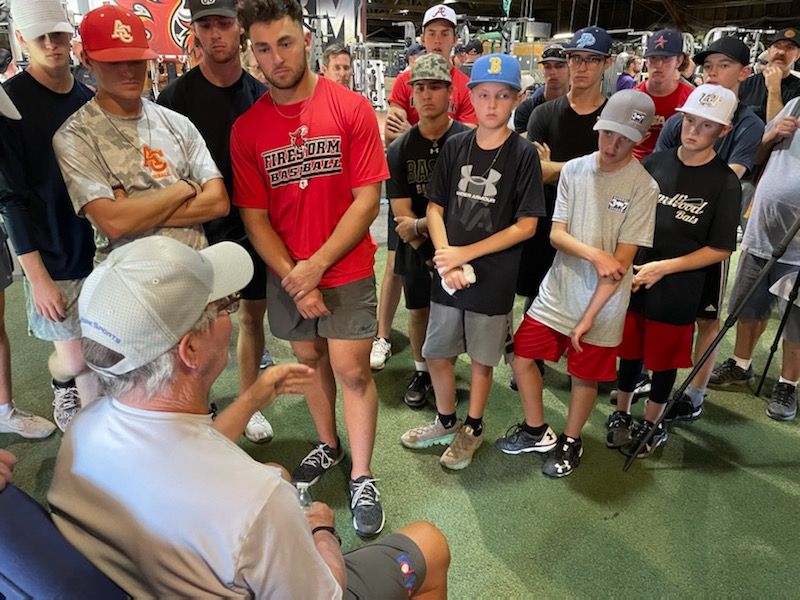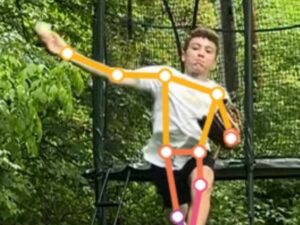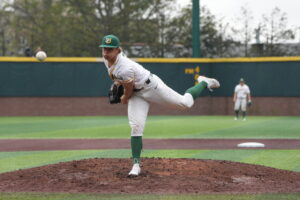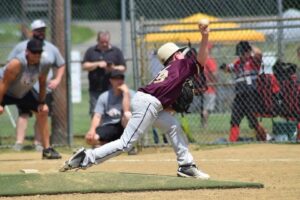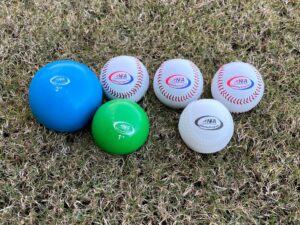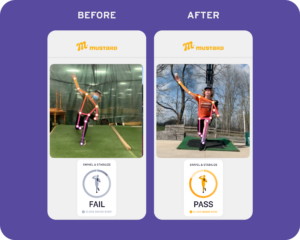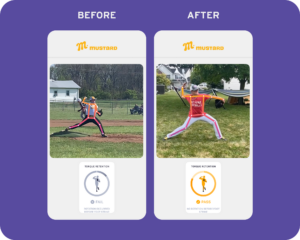By Tom House, PhD, with Lindsay Berra
I get it. Every time a 2-year-old picks up a Wiffle ball and zips it across the back yard, proud moms and dads want to think they have the next Max Scherzer on their hands. My advice? Just let kids be kids until they show you they can really be Scherzers. As they say, don’t put the cart before the donkey. The process of growing up and becoming an athlete is much more enjoyable for both kids and parents if you move at an age-appropriate pace and take pleasure in small gains. And when it comes to baseball, there are easy ways to tell when your kids are ready to learn new skills. But, they must learn how to catch and throw before they can pitch.
Watch How Your Kid Catches a Ball
Fear is the biggest impediment to catching and hitting. Every time I have a group of 8 and 9-year-olds who have never learned to play catch or even throw, I start by watching how they catch a ball. If any kid, male or female, goes to catch a ball with their palms up, they are not ready to learn how to throw. They have to learn to catch first, to turn their hands over with the fingers up and the palm facing the ball, moving to pick the ball out of the air rather than waiting for it to hit their open palms. Psychologically, when youngsters can fend off a ball and protect themselves, they’re ready to start thinking about throwing. And if they are approaching the ball palms-up, practice with a Wiffle ball or tennis ball until they’re properly moving to the ball. Most kids quit baseball because of a fear of the ball, so no need to compound it with a harder, heavier one before they’re ready.
Practice Catching with One Hand
You catch with one hand and you throw with two hands. I know, that’s the exact opposite of what people have taught for hundreds of years. Have your kids put their throwing hands in their pocket or tuck them into their belts and catch ground balls with one hand, then exchange it and toss it back to you. Do the same thing with pop flies. Your eyes work better catching with one hand than they do with two. Need some proof? Try to put a key in the front door with two hands. You have to really try. It feels almost impossible, but with one hand, the key goes right in.
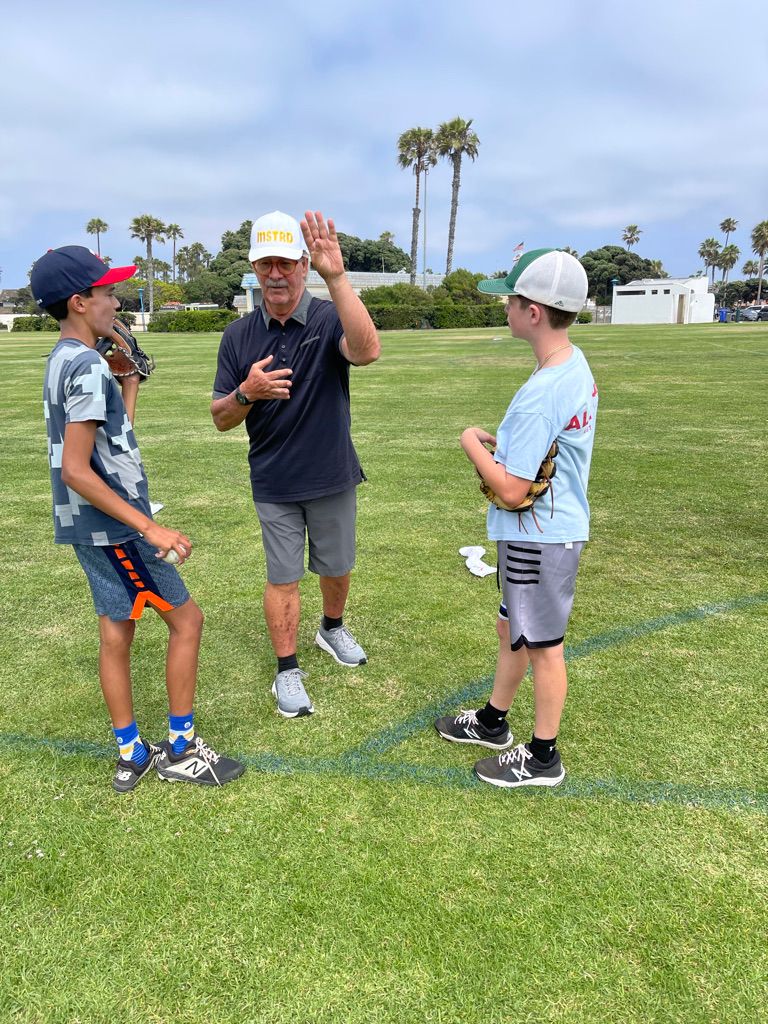
Starting to Throw
Once youngsters are comfortable catching the ball, they can start to throw with intent. Very simply, have them point the glove at the target, shuffle their feet, and throw. Don’t talk about what they should be doing with the throwing arm or their feet; it only makes things more complicated for them. Even the most uncoordinated kids, when asked to shuffle, will come up with a crow hop or step behind. And it doesn’t matter which one; it’s just to get the body moving.
Watch How the Hands Break
When your kids start to throw, watch the way they break their hands. If your kids’ hands go palm-up when they break to throw at the target, it’s about 99% sure they don’t yet have the functional strength to throw. It’s the old “throw like a girl” stereotype, which has absolutely nothing to do with being a girl; I’ve seen plenty of young men throw with their palms under the ball, like they’re tossing a pie, and it’s simply because they’re just not strong enough yet. When you see a kid do that, have him or her break their hands with the thumb down. However, it will be a harder position to hold, so be mindful that they have to make fewer throws.
Grip Matters
As tempting as it is to teach young kids to hold the baseball with two fingers, like they’re throwing a big-league splitter, let them hold the ball with three or four fingers to start. It will give them extra strength to hold the ball, and it doesn’t make a lick of difference how many fingers they use as long as the thumb and middle finger cut the ball in half; this is important even for big-league pitch grips. As kids grow and get stronger, they always figure out on their own when to move those extra fingers off the ball.
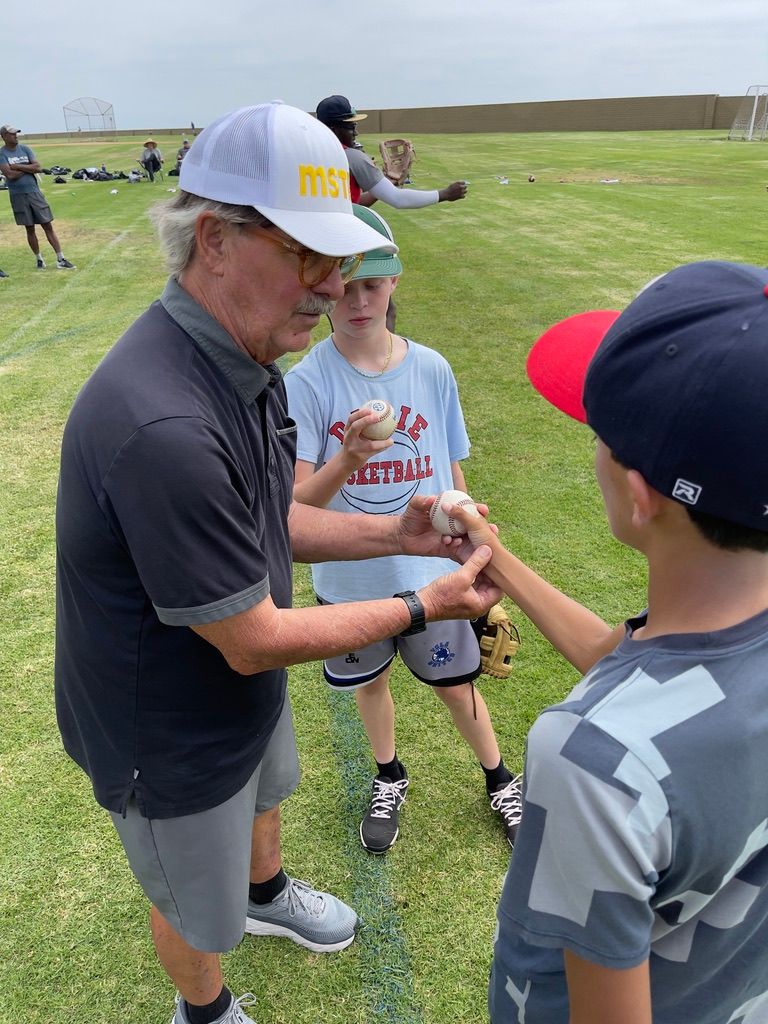
Starting to Pitch
While I think it’s great for young kids to learn the mechanics of throwing and pitching, I don’t believe that pre-adolescents and Little Leaguers should be competitive pitchers – regularly throwing off of a mound – until they are at least 11 or 12 years old. It’s not until then that their functional strength is adequate enough to support and stabilize their bodies against the extra forces created by throwing off of a mound. When they are strong enough, parents can understandably have trouble wading through the jargon and science of pitching mechanics. I also don’t believe that just because we can use big words to describe movements means we have to! So, when coaching kids, I break pitching down to four main ideas: Go fast, keep the glove in front, keep the eyes level, and keep the back toe down. Keep in mind that these are all concepts I use for big league pitchers, too! But, if parents want to read more about the biomechanical reasons behind why we do these things, we’ve also linked to other blogs that can give you more information.
Go Fast: I can’t say it enough: GFF! That’s “Go Forward Fast.” Yes, sometimes I use a more colorful phrase for that first ‘F,’ but no matter. The point is the same: Move as quickly as possible down the mound. I don’t care how silly the kids tell you they feel. It’s better to be too fast into foot strike than too slow. If you want to read more about GFF, check out our blogs on timing and stride length and lift and thrust.
Glove in Front: Keeping a firm front side is essential in the pitching delivery, but it can be hard for both parents and kids to understand this concept. So, one trick is to squeeze your glove as hard as you can. Roger Clemens was the best example of this. If you look at him as he moved into foot strike, he was always squeezing the glove so hard it seemed like he’d crush it. But, that muscular activation serves to stabilize the front side. Plus, keeping the glove in front will keep kids ready to field balls that come right back at them! If you want to read more about how to use the glove, check out our blog on the mechanical variable swivel and stabilize.
Roger Clemens overhead pics pieced together to illustrate his glove side use. pic.twitter.com/21oVPp3q3i
— Rob Friedman (@PitchingNinja) May 10, 2016
Eyes Level: This can be a hard concept for kids to grasp during the pitching delivery, so I have them do it just when they’re walking around. I tell them to tilt their heads any way they want, to look down for pennies, to look up at the sky, anything that gets the eyes off of level. They learn quickly that if the eyes aren’t level, even something as simple as walking is difficult. Understanding the concept of how a tilted head really messes up balance will carry over to the delivery. I always ask them, “Do you want to look for pennies or dollars?” If they’re looking down, they’re looking for pennies. If their eyes are up and they’re looking at the target, they’re looking for dollars. It’s also worth noting that if the head moves inappropriately before foot strike, it’s usually due to an issue with functional strength, which is yet another reason why kids shouldn’t be pitching until they’re 11 or 12. If you want to read more about keeping the eyes level, check out our blog on head position.
Back Toe Down: Keep the back foot on ground until the ball leaves the hand. I’ll challenge the kids, ask them how long they can leave that back foot on the ground through the delivery. I say, “Go as fast as you can and throw as hard as you can, but don’t let the foot leave the ground.” It will get to a point when the front foot hits that they no longer can keep the foot on the ground, but trying to keep it down will perfect the timing of the delivery. Another cue is to ask the kids to try to draw as long of a line as possible in the dirt with the back toe. If you want to read more about keeping the back foot down, check out our blog on drag lines.
If you’d like more great content from Mustard, and you’d like to evaluate and improve your own pitching mechanics, download the Mustard pitching app today.

